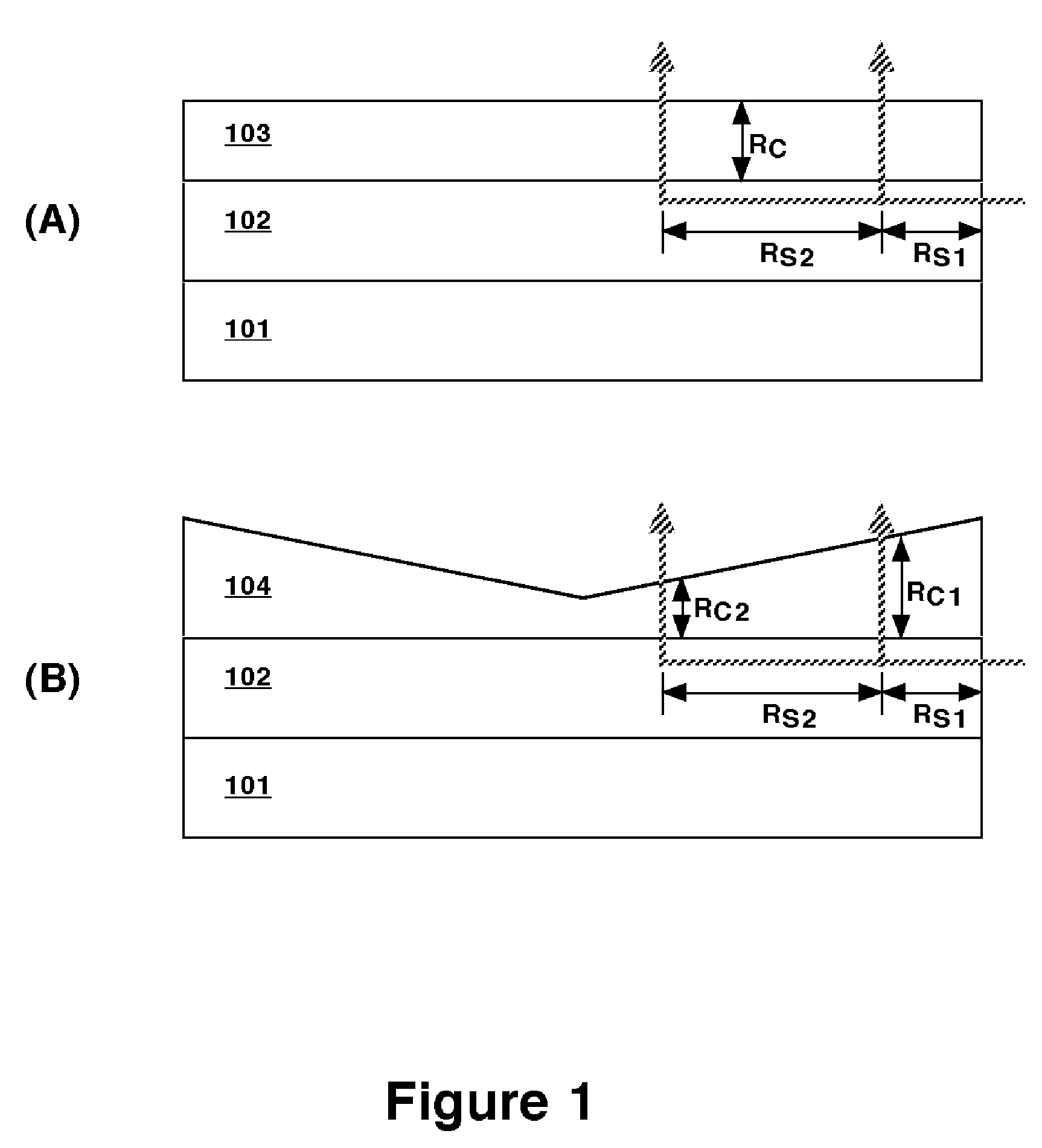Electrode with transparent series resistance for uniform switching of optical modulation devices
a technology of optical modulation device and transparent series resistance, which is applied in the field of devices, can solve the problems of reducing the maximum optical transmission of the device and/or unacceptably increasing the voltage required for switching, and achieve the effects of increasing the reflectance, decreasing the transmission of the device, and increasing the reflectan
- Summary
- Abstract
- Description
- Claims
- Application Information
AI Technical Summary
Benefits of technology
Problems solved by technology
Method used
Image
Examples
example 1
[0042]The electrode resistance increase associated with the sputtered ZnO, SnO2, TiO2 and Al2O3 innerlayers (sandwiched between an 20-ohm ITO underlayer and a 100-ohm ITO / Pt overlayer) was determined by cyclic voltammetry at 50 mV / s between −0.1 and +0.2 V vs. Ag wire reference electrode in a deaerated electrolyte suitable for REM devices (1.5 M AgI and 2.0 M LiBr in gamma-butyrolactone solvent). Electrode resistance was determined from the voltammetric slopes in the cathodic region since those in the anodic region tended to be more variable and somewhat lower, presumably due to greater concentration polarization. Table 1 summarizes the data for the total electrode resistance and the innerlayer resistance (total resistance minus the resistance measured for the ITO / Pt substrate). The values given are the average of two measurements, which generally yielded comparable results. The highest innerlayer resistance (around 300 ohms / cm2) was attained with the thicker TiO2 and Al2O3 innerlay...
example 2
[0044]The densities and diameters of Pt spheroids obtained after plating for 5 minutes at −0.45 V vs. SCE from a commercial Pt plating bath (Technic, Inc., Platinum-A bath) operated at pH 11.5 and 80° C. were determined from scanning electron micrographs for ITO / SnO2 specimens, with and without an ITO overlayer. Plating on 10-20 ohm / square ITO films without resistive innerlayers under the same conditions consistently gave 1-3 million spheroids / cm2 with diameters of 1.2-1.3 μm. Plating directly on the thin SnO2 layers gave very low Pt spheroid densities. In all cases, plating on the specimens with ITO surface modifications on SnO2 innerlayers gave Pt spheroid diameters and densities within the ranges obtained for specimens without the resistive innerlayers, indicating that the electrochemical properties of sputtered ITO were not affected by the resistive innerlayers.
PUM
| Property | Measurement | Unit |
|---|---|---|
| sheet resistances | aaaaa | aaaaa |
| sheet resistance | aaaaa | aaaaa |
| sheet resistance | aaaaa | aaaaa |
Abstract
Description
Claims
Application Information
 Login to View More
Login to View More - R&D
- Intellectual Property
- Life Sciences
- Materials
- Tech Scout
- Unparalleled Data Quality
- Higher Quality Content
- 60% Fewer Hallucinations
Browse by: Latest US Patents, China's latest patents, Technical Efficacy Thesaurus, Application Domain, Technology Topic, Popular Technical Reports.
© 2025 PatSnap. All rights reserved.Legal|Privacy policy|Modern Slavery Act Transparency Statement|Sitemap|About US| Contact US: help@patsnap.com



